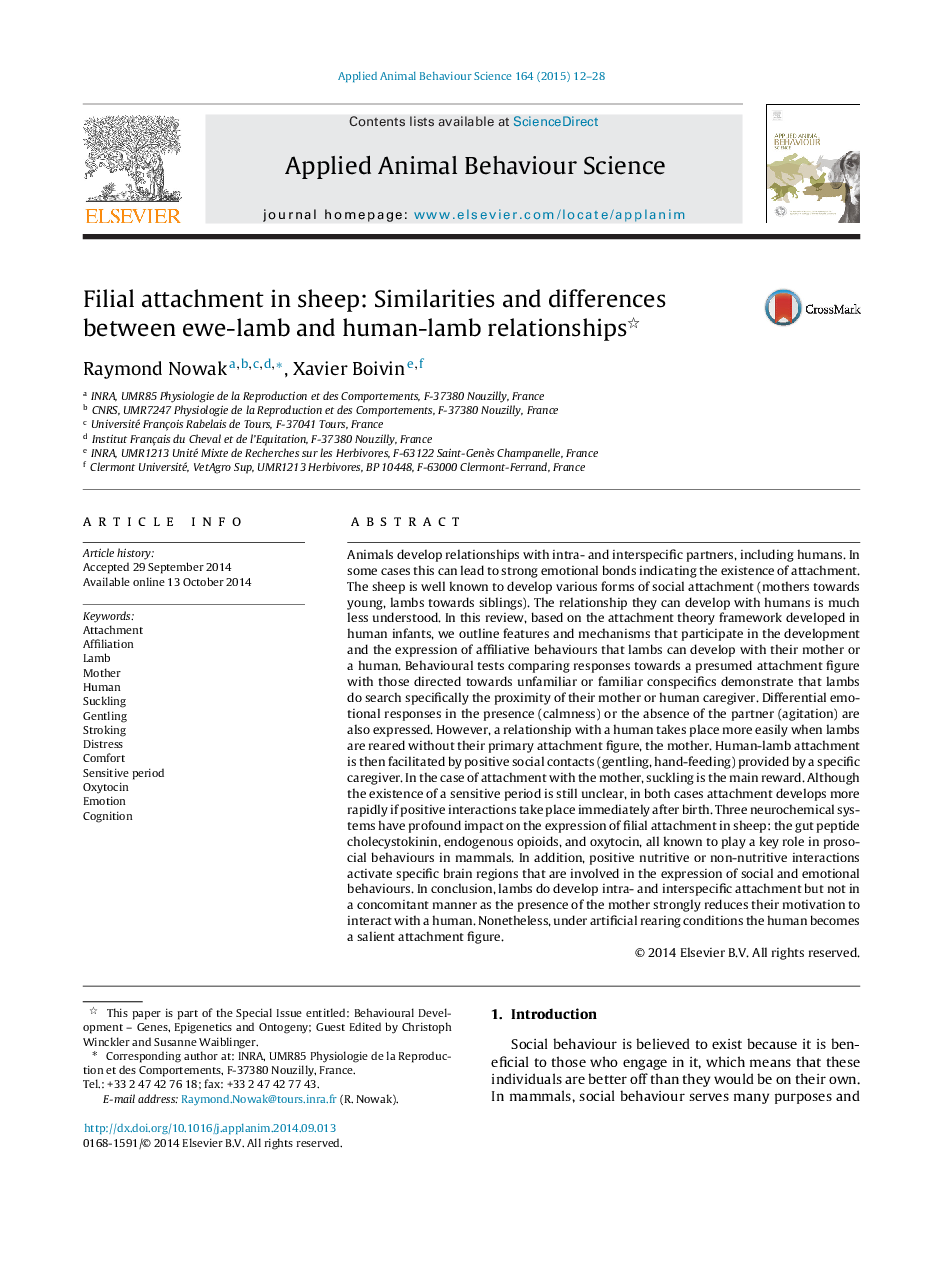| کد مقاله | کد نشریه | سال انتشار | مقاله انگلیسی | نسخه تمام متن |
|---|---|---|---|---|
| 4522449 | 1625342 | 2015 | 17 صفحه PDF | دانلود رایگان |
• Lambs do search specifically the proximity of their mother or human caregiver.
• Attachment to humans develop more easily in lambs reared without mothers.
• Lambs show emotional responses in the presence or the absence of their partner.
• Infant attachment relies on positive interactions that includes feeding and touch.
• Attachment develops more rapidly if positive interactions take place soon after birth.
Animals develop relationships with intra- and interspecific partners, including humans. In some cases this can lead to strong emotional bonds indicating the existence of attachment. The sheep is well known to develop various forms of social attachment (mothers towards young, lambs towards siblings). The relationship they can develop with humans is much less understood. In this review, based on the attachment theory framework developed in human infants, we outline features and mechanisms that participate in the development and the expression of affiliative behaviours that lambs can develop with their mother or a human. Behavioural tests comparing responses towards a presumed attachment figure with those directed towards unfamiliar or familiar conspecifics demonstrate that lambs do search specifically the proximity of their mother or human caregiver. Differential emotional responses in the presence (calmness) or the absence of the partner (agitation) are also expressed. However, a relationship with a human takes place more easily when lambs are reared without their primary attachment figure, the mother. Human-lamb attachment is then facilitated by positive social contacts (gentling, hand-feeding) provided by a specific caregiver. In the case of attachment with the mother, suckling is the main reward. Although the existence of a sensitive period is still unclear, in both cases attachment develops more rapidly if positive interactions take place immediately after birth. Three neurochemical systems have profound impact on the expression of filial attachment in sheep: the gut peptide cholecystokinin, endogenous opioids, and oxytocin, all known to play a key role in prosocial behaviours in mammals. In addition, positive nutritive or non-nutritive interactions activate specific brain regions that are involved in the expression of social and emotional behaviours. In conclusion, lambs do develop intra- and interspecific attachment but not in a concomitant manner as the presence of the mother strongly reduces their motivation to interact with a human. Nonetheless, under artificial rearing conditions the human becomes a salient attachment figure.
Journal: Applied Animal Behaviour Science - Volume 164, March 2015, Pages 12–28
